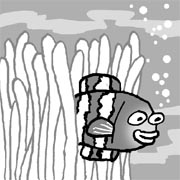Using lessons from nature in economics

The natural world is comprised of complicated symbiotic networks. Crocodiles and the Egyptian Plovers; Goby fish and shrimp; and leguminous bacteria and potatoes are in symbiotic relationships.
However, not all of these relationships are mutually beneficial. In a commensalist relationship, one organism benefits but the other is neither harmed nor benefitted such as when mites ride on insects as a means of transportation. Parasitism is a relationship in which one organism benefits while the other is harmed. A parasite lives at the expense of its host. In any case, both commensalism and parasitism are symbiotic relationships, taking advantage of and helping one another.
The ecosystem plays host to a series of threats and even a peaceful meadow teems with life and death. A lion may be at the top of the food chain, but it is not easy being a lion either. A lion’s rate of hunting success is about 30 percent. If a lion gets injured in the course of hunting, it could die of starvation. Or, if the zebra population declines and a draught hits the meadow, even the lions may go the way of mutual destruction.
Symbiosis is the invisible hand that keeps the ecosystem running. In the food chain, various elements maintain balance and harmony, making symbiosis amid tension possible. In a way, what makes the ecosystem run is the lack of control. As ancient Chinese philosopher Laozi once said, “Heaven and earth are ruthless.”
President Lee Myung-bak emphasized “development through symbiosis” in his Liberation Day address on Aug. 15. In the English transcript, it was translated as “ecosystemic development.” But, that is closer to market-oriented development without control than symbiosis.
Of course, he was not including commensalism and parasitism. Therefore, it would have been more appropriate for him to have said “development through mutualism” to indicate a relationship that benefits all economic and social entities. He could have made it even better by adding “without control.”
*The writer is a special director of jTBC.
By Park Jong-kwon










with the Korea JoongAng Daily
To write comments, please log in to one of the accounts.
Standards Board Policy (0/250자)